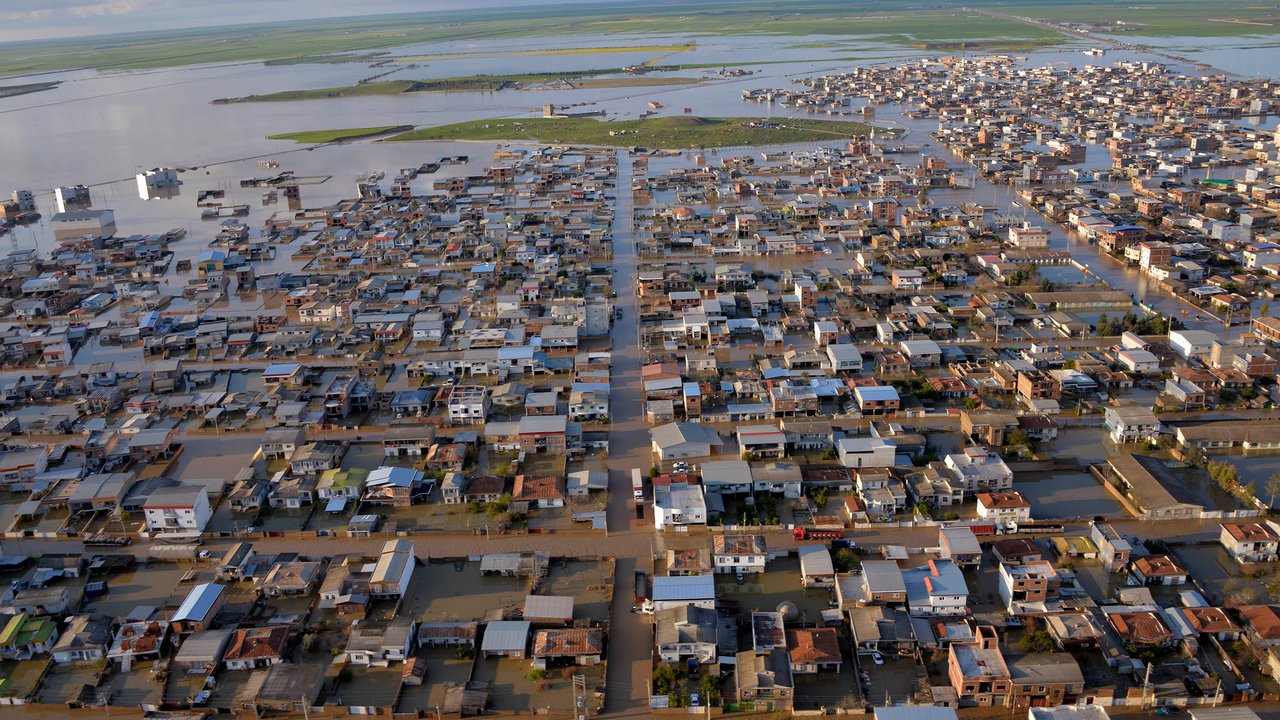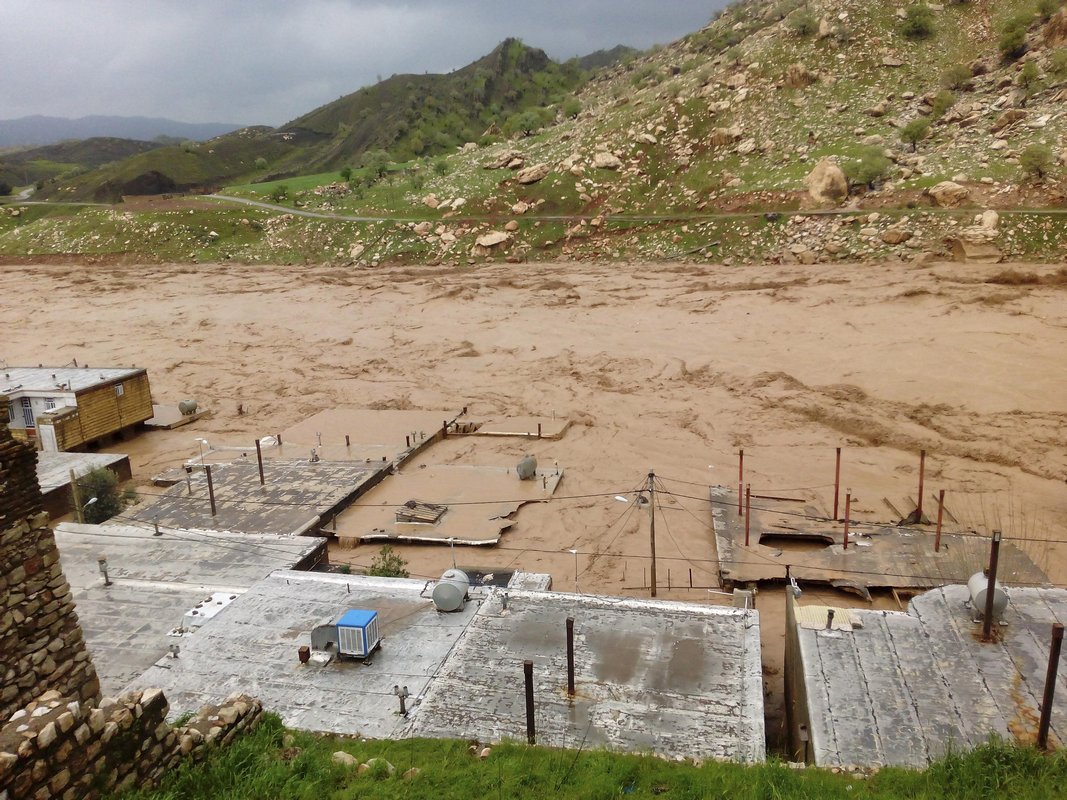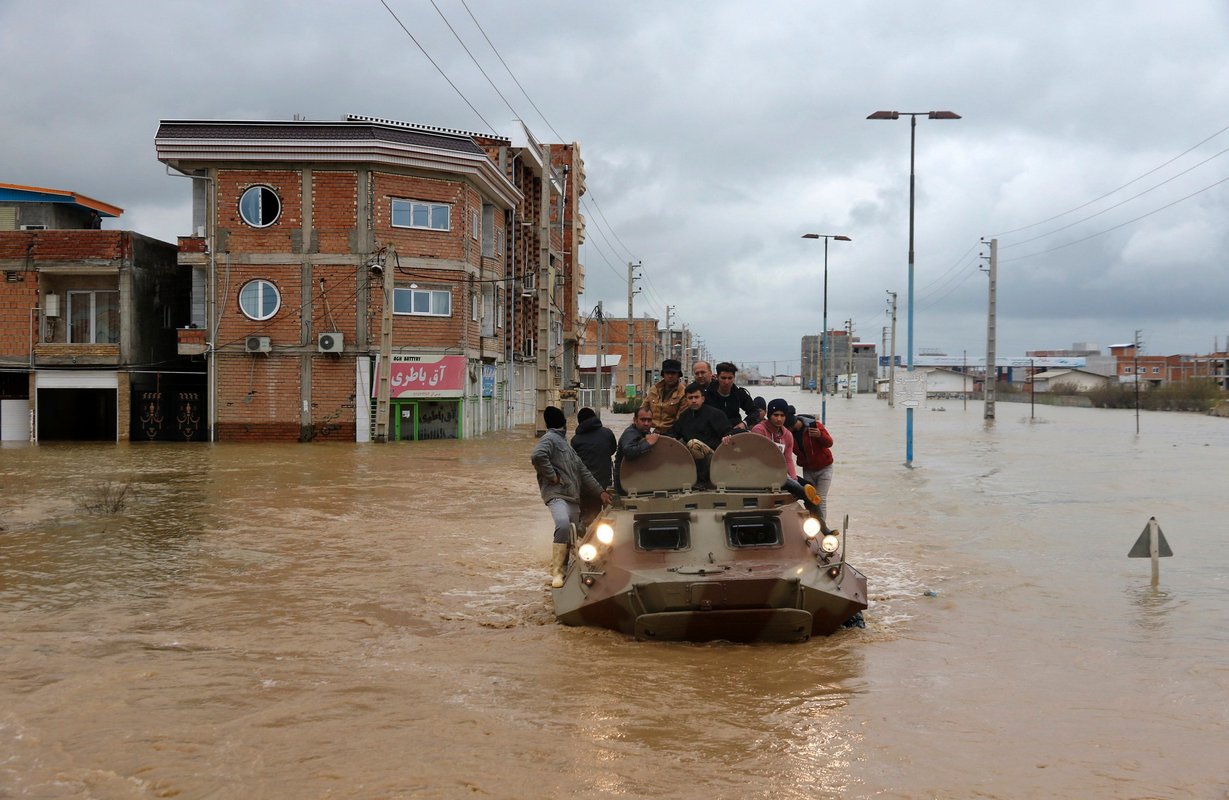Iranian authorities have ordered mass evacuations in several cities amid fears of more flooding as a result of rising water levels in rivers and major dams.
People in at least six cities and over 100 villages in the southwestern province of Khuzestan were told on early Saturday to leave their houses and stay in safe areas as officials prepared to fully open the floodgates at the Karkheh Dam.
With a reservoir capacity of 5.9 billion cubic meters, the vast embankment dam has been taking in large amounts of floodwater over the past weeks and is currently operating near full capacity.
Other major dams in the province like Dez and Karun were also letting off increasing amounts of water to prepare for heavy torrents that officials said would soon submerge large parts of the province before heading to the main rivers and eventually reaching the dams.
Dozens of small towns and villages along rivers Karun, Dez and Karkheh had already been evacuated as a precaution.
Iran’s Meteorological Organization (IRMO) has predicted heavy rains for Khuzestan in the coming days.
Interior Minister Abdolreza Rahmani Fazli said Friday that flood threatened nearly 400,000 people in the province, which has a population of about 5 million.
Kiomars Hajizadeh, head of Khuzestan’s crisis response committee, said over 25,000 people had been resettled in more than 40 safety centers.
Evacuations also continued in the western province of Lorestan, which has experienced widespread damage due to severe flooding.
The mountainous terrain in the region has slowed down rescue operations to some degree.
Chairman of the Chiefs of Staff of the Iranian Armed Forces Major General Mohammad Baqeri said that the country’s armed forces – the Army and the Islamic Revolution Guards Corps (IRGC) were continuing their rescue operations in flood-hit areas.
Heavy floods have affected at least 23 of the country’s 31 provinces since heavy downpours began on March 19.
Major floods have been reported in the provinces of Golestan, Mazandaran, Gilan, Kordestan, Ilam, Lorestan, Fars, Northern Khorasan, Kermanshah, Khuzestan, Kohgiluyeh, and Boyer-Ahmad as well as Sistan and Baluchestan.
According to the Iranian Red Crescent Society (IRCS), nearly 2,000 rescue workers – including military servicemen and voluntary groups – had carried out over 400 sorties in Lorestan, using at least 10 choppers, delivering over 200 tons of aid to flood-hit areas of Lorestan.
Around 58,000 people also received aid and emergency services in Mazandaran and Golestan provinces, which have been struggling with flooding since March 18.
In Ilam, another province hard hit by flood, the IRCS coordinated more than 40 sorties and helped delivered nearly 12 tons of humanitarian aid.
Estimates by government agencies suggest that the floods have taken the lives of at least 67 people and destroyed over 25,000 homes around the country.
Most damages have been reported in Lorestan, which is also said to have suffered the second highest number of casualties after the Fars Province.
Police have asked people to avoid traveling to flooded cities in western and southwestern parts of the country.
 Alghadeer TV Alghadeer TV
Alghadeer TV Alghadeer TV




